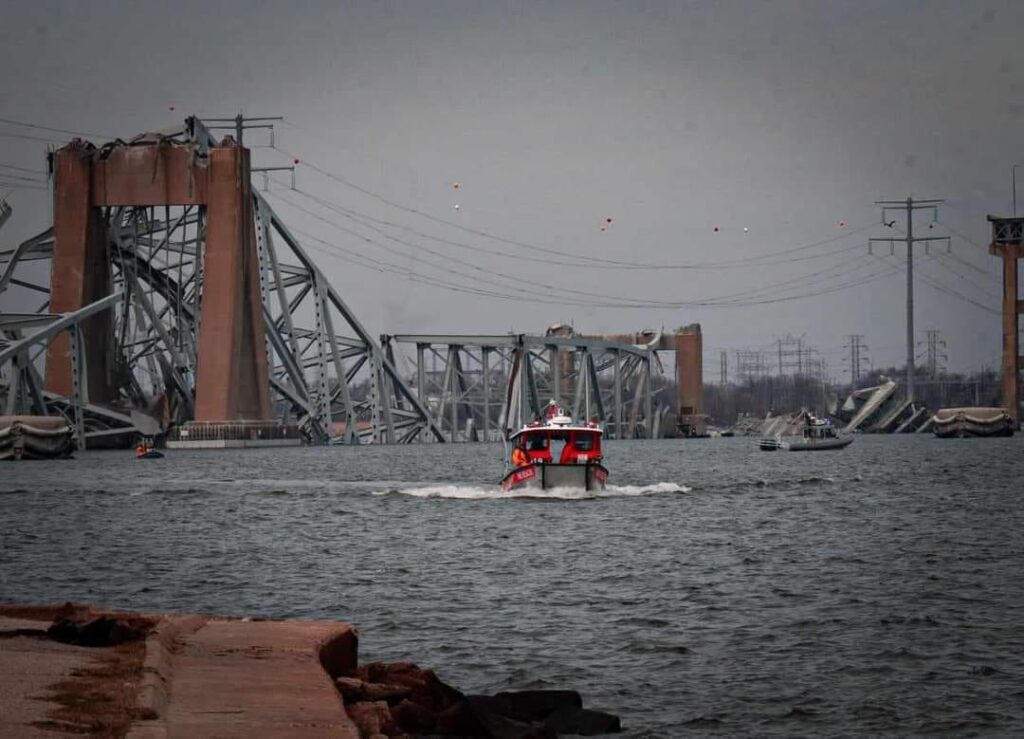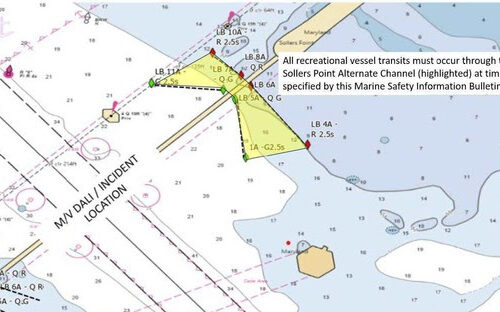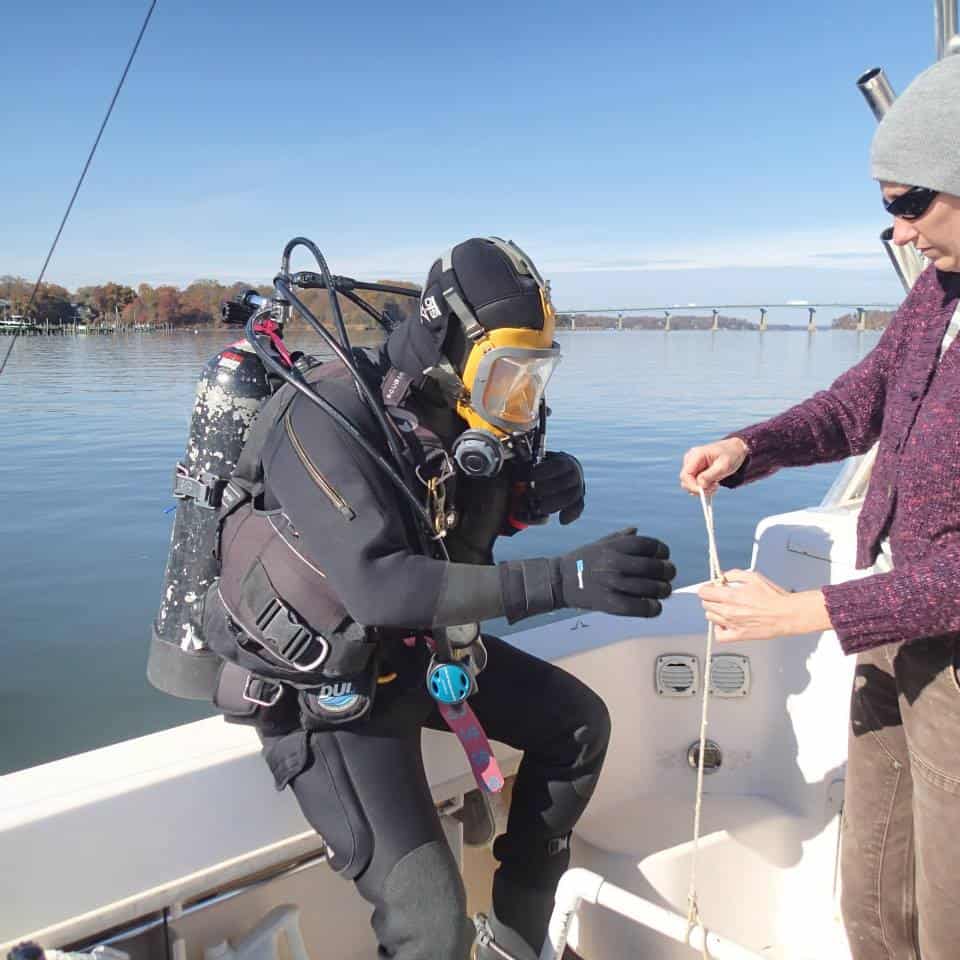As the Key Bridge disaster response shifts to vehicle recovery and salvage operations, concerns are mounting about hazardous and possibly harmful substances in the Patapsco River. But state environmental scientists want to set the record straight about what we should be concerned about.
Cleanup efforts are led by the Key Bridge Unified Command, a group that includes the U.S. Coast Guard, Maryland Department of the Environment, Maryland Transportation Authority, Maryland State Police and Synergy Marine, the owners of M/V Dali, the 984-foot-long container ship that lost power and struck a Key Bridge support, bringing the entire bridge down in seconds.
Does the incident put the Chesapeake Bay at risk? Faculty at the University of Maryland Center for Environmental Science (UMCES) say the key concerns are:
- What happens to heavy metals when polluted mud is disturbed
- How water quality is impacted by dredging the channel to deepen it for large ships
- How that material can be used to rebuild marsh and habitat, and how fish and crab breeding grounds may be impacted.
There are 56 containers carrying hazardous materials loaded on the the Dali. Of the 56, 14 containers were impacted by the collision and the bridge’s collapse, according to Unified Command. They have undergone testing and were found to contain soap products, perfume products, or unspecified resin. No volatile organic compounds or flammable vapors were found, nor any atmospheric hazards in the air.
First responders have seen a sheen on the surface of the water around the ship. Crews deployed 2,400 feet of sorbent boom, 2,400 feet of hard containment boom with anchoring systems, and there is 1,000 feet of boom on standby.
UMCES believes the immediate ecological impacts of the collapse will be minimal. It’s the effects of the salvage operation and subsequent reconstruction that concern them more. But the real impact may be seen as the salvage operations stretch from weeks into months.
As the cleanup continues into the spring and summer, more migratory fish will begin moving through the shallow waters that border the shipping area, like shad and river herring. Crabs will be emerging from the mud. Dolphins, spotted above the bridge in recent years, will likely avoid the area if pile driving and other activity is causing loud noises.
UMCES says the good news is that this time of year, there is little migratory fish activity, fish and shellfish spawning is low and aquatic vegetation (marshes and submerged grasses) are not growing quickly. So the bridge’s steel structure and road surface aren’t an immediate threat beyond damage to the habitat they landed on.
UMCES says the bridge collapse has likely affected the chemical balance in the port waters of Baltimore and some contaminants from long-ago industrial activity may have been disturbed and are now exposed.
Another potential disturbance could come with dredging in shallower areas outside the established port channel. “Impacts in these shallow areas may be greater, and careful monitoring of the composition of the dredged material is warranted,” UMCES says, noting that there are beneficial uses of the dredged materials.
UMCES has been working directly to provide the Maryland Port Administration with advice on environmental and economic issues for almost 40 years and has an important role in the Dredged Material Management Program.
Teams are collecting water samples to monitor pollution as crews continue to clean up debris and pollution from the river. Water quality watchdog group Blue Water Baltimore is calling on anyone who sees changes in the water, like strange odors, discoloration, or dead fish, to report them to the group’s pollution reporting hotline at bluewaterbaltimore.org/report.
The organization said in a statement, “There are multiple issues we are deeply concerned about, from potential fuel leaks to the amount of debris in the water.”




